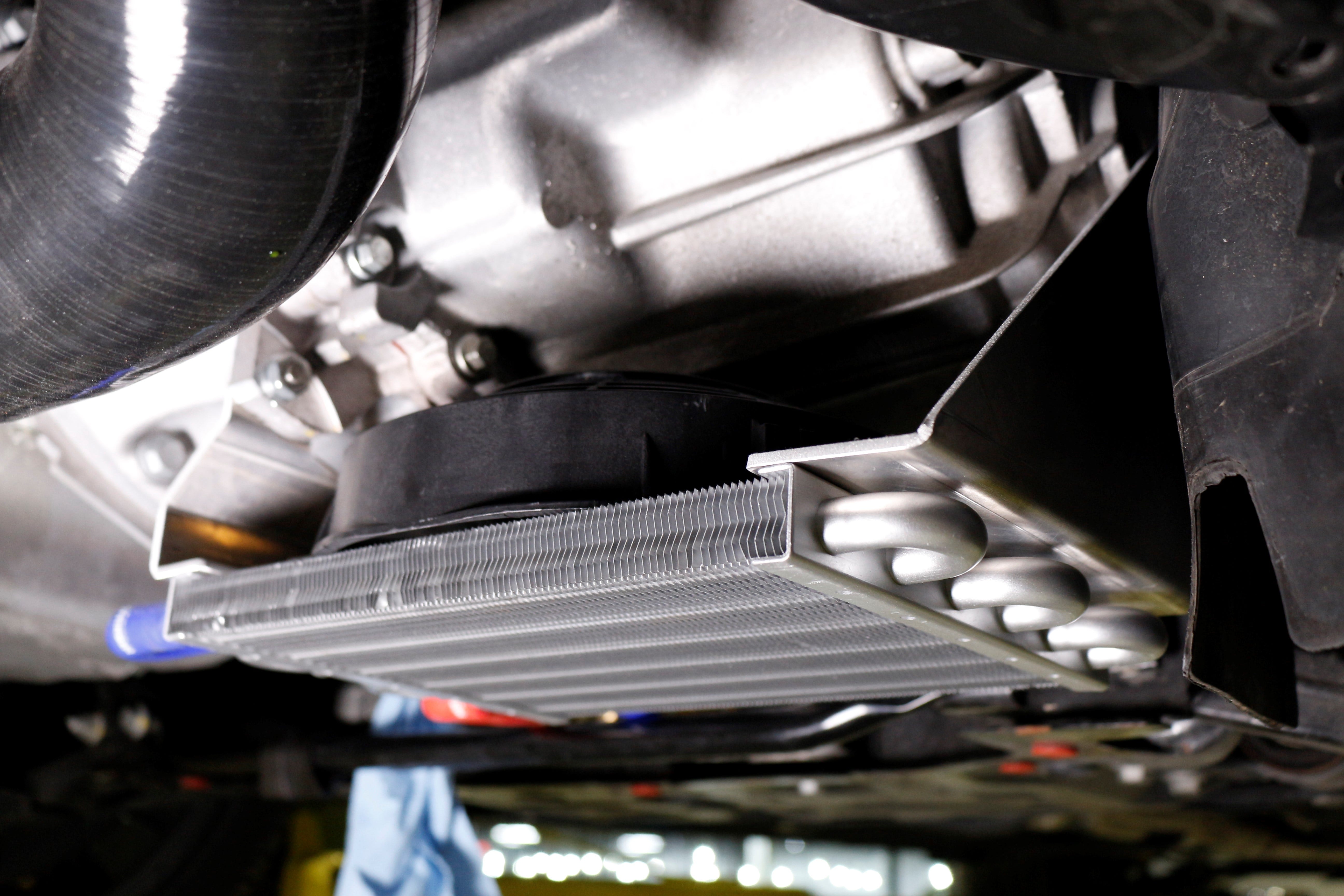
Diff's Hot, Take it Easy - Rear Differential Cooler R&D, Part 2: The Master Plan
The mood for the past few days here at the Mishimoto office has been a little giddy. Scrawled on our calendar in one of our project manager's less than impeccable handwriting are the words "Focus RS track testing". There's a lot of hard work being done, but underneath it all lies a childlike wonder for what's going to happen in the next week.

We've spent countless hours street testing over the past several weeks, trying to learn more about the relationship between the PTU, ECU, and RDU. We've learned a lot from this testing, but we're finding that we can't push the car hard enough on the street to match what you all are seeing at the track, without getting arrested anyway. So, we're gearing up for another track day to push the RS and its PTU and RDU to their limits.
The PTU and the RDU are a tight pair, we knew that already. What we needed to learn was at exactly what temperature the RDU is placed in thermal protection mode and how the PTU and ECU determine the RDU oil temperature without a temp sensor directly in the RDU. Dan, the project engineer, fitted the PTU and the RDU with sensors and began monitoring their temperatures. After a lot of hard driving (definitely not a lot of donuts and drifting), we determined that the PTU and RDU temperatures increase at the same rate. From this relationship, the AWD system can accurately infer the RDU gear-oil temperature from the PTU temperature, and place it in thermal protection when needed.
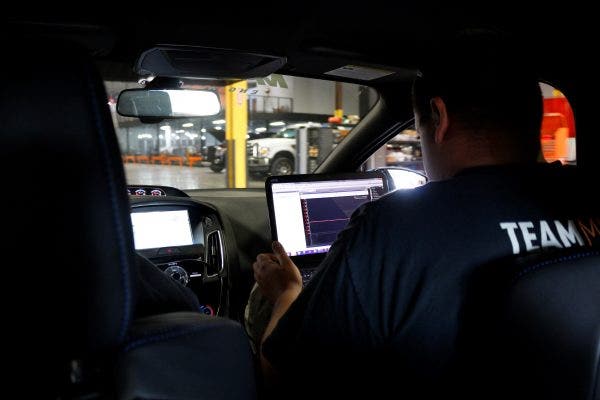
Armed with that knowledge, Dan used a potentiometer in place of the PTU temp sensor and mimicked its signals to the AWD system. Referencing the PTU temp sensor chart in Ford's factory service manual, we found that the RDU's clutch packs are disengaged when the PTU signals a temperature between 290°F and 310°F. This relates to an RDU temperature of about 220°F.
With the temperature at which the PTU and AWD system signal the RDU to disengage the clutch packs determined, we knew our goal for creating a cooling system. The RDU must remain under 220°F and the PTU under 290°F to keep the RDU functioning and power transferring to the rear wheels.
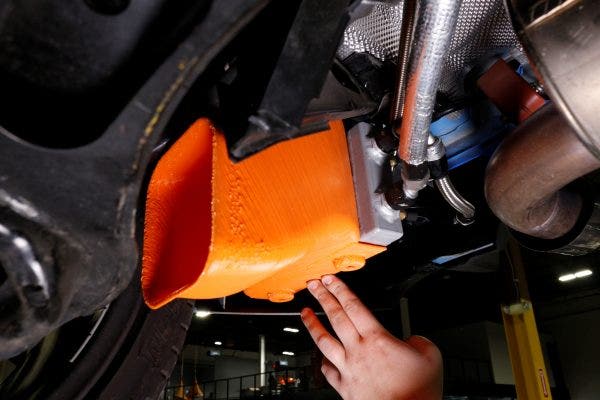
Rear differential overheating issues are nothing new for the Focus RS. We knew as soon as we brought the car into our R&D facility that this issue would need to be dealt with eventually. If you've read our blog for the RS oil cooler, you know that we've already taken the RS to the track once before. But the oil cooler wasn't the only part being tested that day; we were also testing ducting for a rear differential cooler. We wanted to test multiple options and make sure that we were able to build the best possible ducting that would get the future diff cooler the most possible air.
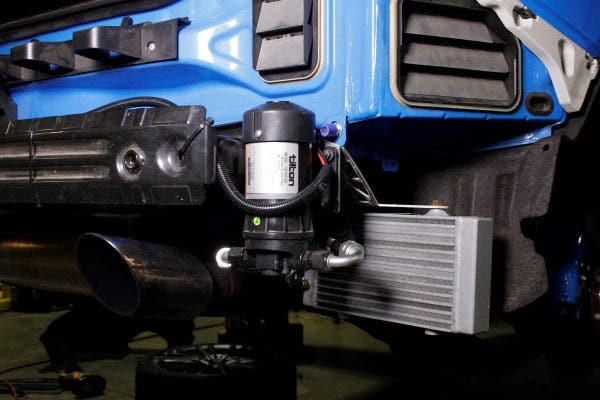
With the rear ducting tested and chosen, we had to build the RDU cooler itself. As you all know, the RDU is a complex unit. The RDU case houses a gear drive connected to the drive shaft that is constantly rotating and receiving power from the engine, whether the rear wheels are receiving power or not. Also within that case is a hydraulic pump that feeds two solenoids. These solenoids are what control the engagement of the clutch packs and thus the distribution of power to each rear wheel. Depending on the amount of pressure delivered to each clutch pack by the solenoids, the clutches are allowed to slip independently of each other. This slip controls how much power is directed to each wheel. It's also where the heat that we're trying to dissipate is generated.
The clutch packs are filled with their own fluid and are considered non-serviceable parts. What that means for us is that there's no way to tap into that fluid to cool it. Therefore, we must address the oil within the main RDU case that envelops the clutch packs and the gear drive. To cool this oil, Dan built a system that utilizes a thermostatic controller to run a Tilton differential pump based on a temperature sensor mounted in the RDU. The pump circulates gear oil through an external Mishimoto dual-pass, bar-and-plate, liquid-to-air oil cooler. That cooler receives air from the ducting developed earlier and channels it out through the rear valence. Aside from adding an external cooler, this system increases the effective fluid capacity of RDU.
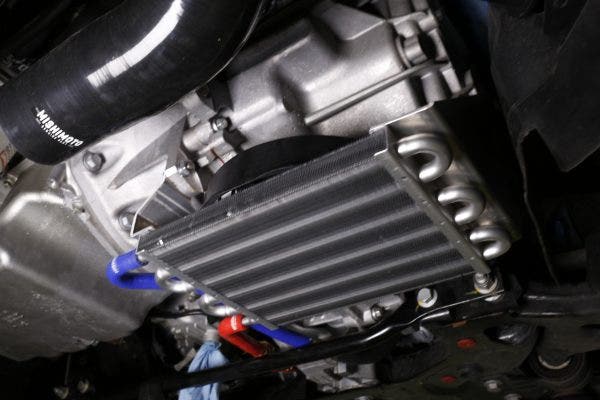
So, we have a plan to cool the RDU and keep the clutch packs within it from overheating, but that won't stop the PTU and AWD system from disengaging those clutch packs and robbing your rear wheels of the power they need. Without cooling the PTU, the cars computer systems will still think the RDU is overheating and shutdown the fun. Dan began developing a cooler for the PTU itself. In stock form, the PTU is cooled by the engine coolant via a built in heat exchanger. To cool the PTU, Dan tapped into the coolant before it enters the PTU and added a transmission-style heat exchanger. On top of that cooler, he mounted an electric fan controlled by the thermostatic controller that activates the RDU fluid pump. When the RDU pump is powered, the electric PTU fan is engaged. All of this is mounted under the transmission and fed air from the ducting built into the stock splash shield. No cutting required.
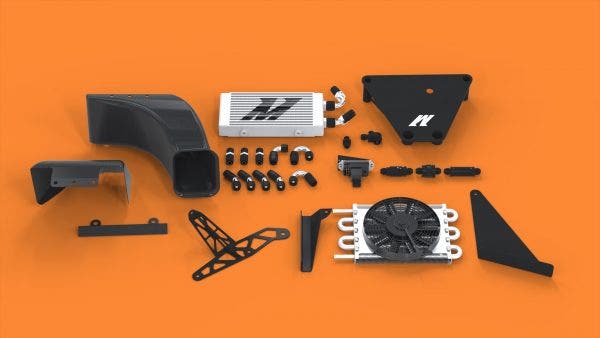
As you can see, we've put a ton of work into this system. It has been a challenging and complex project, and we're proud of how far it's come. With all its complexities, the AWD system of the RS is beyond expensive to replace; we want to make sure we're protecting it. While this kit is still a prototype, and we're still testing and developing, our team is confident that this kit will let you stay on track (or the street) longer. We'll be preparing to thrash our Focus RS at the track for the next week, so let us know what you think and any feedback you have.
If you have a Focus and you want to the next level make sure you check out our Focus ST intercooler kit, it is one of our most popular products at Mishimoto.
Thanks!
-Steve




